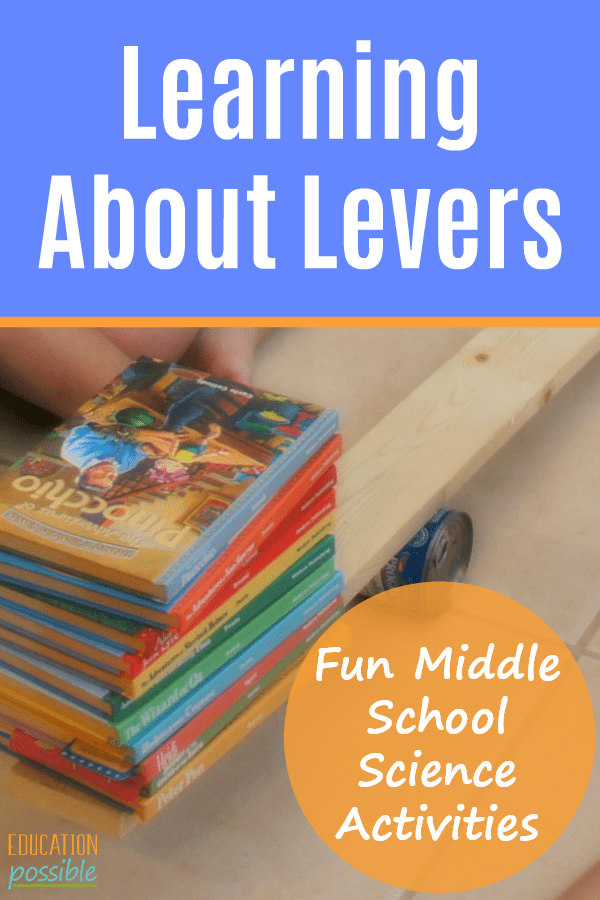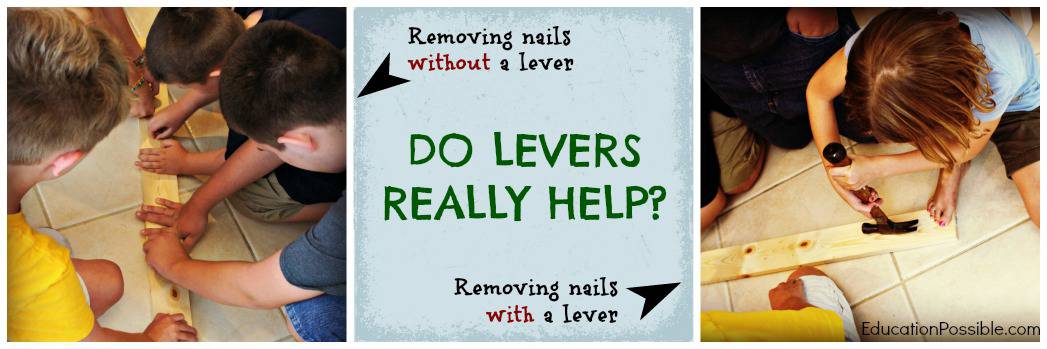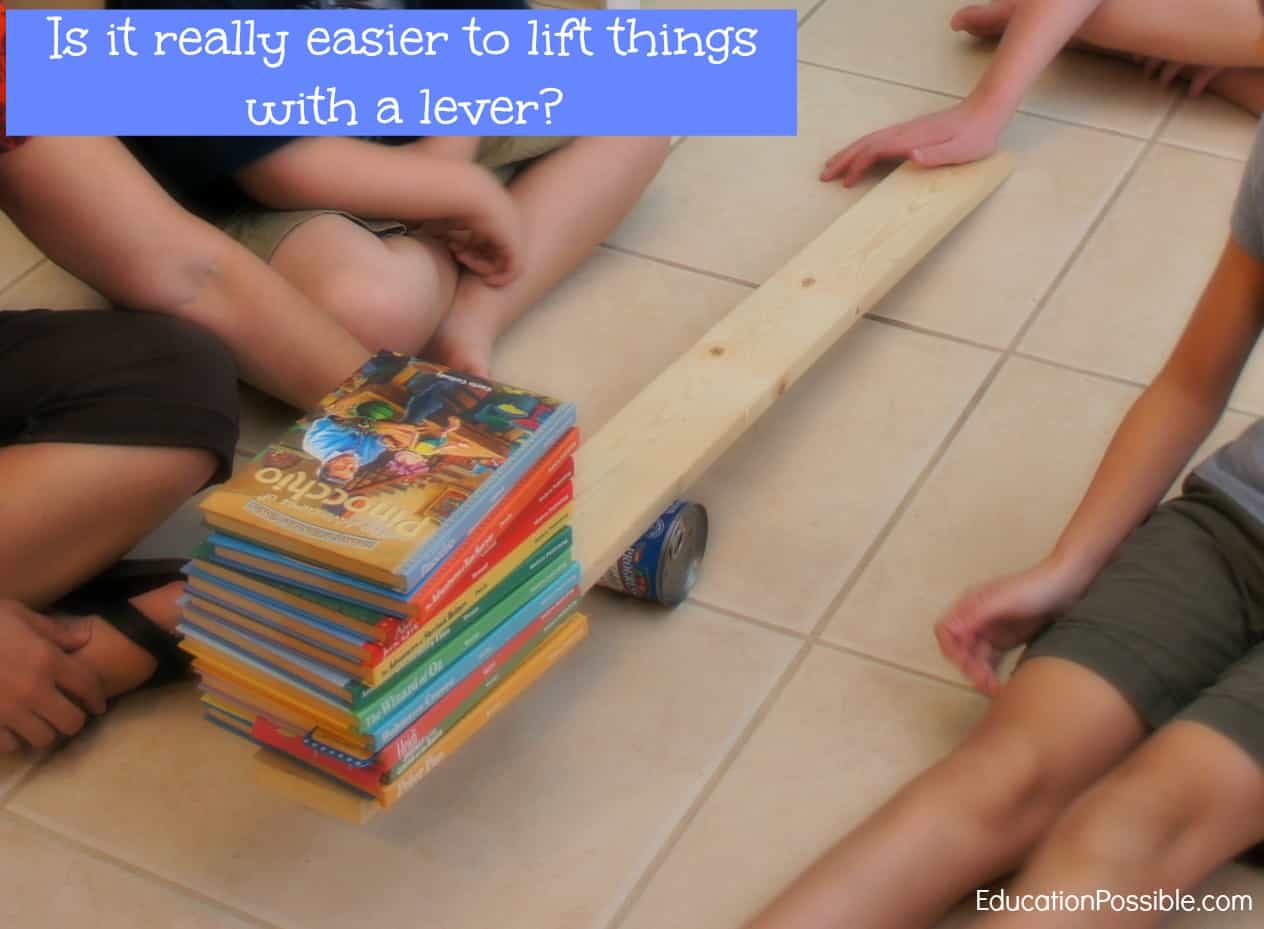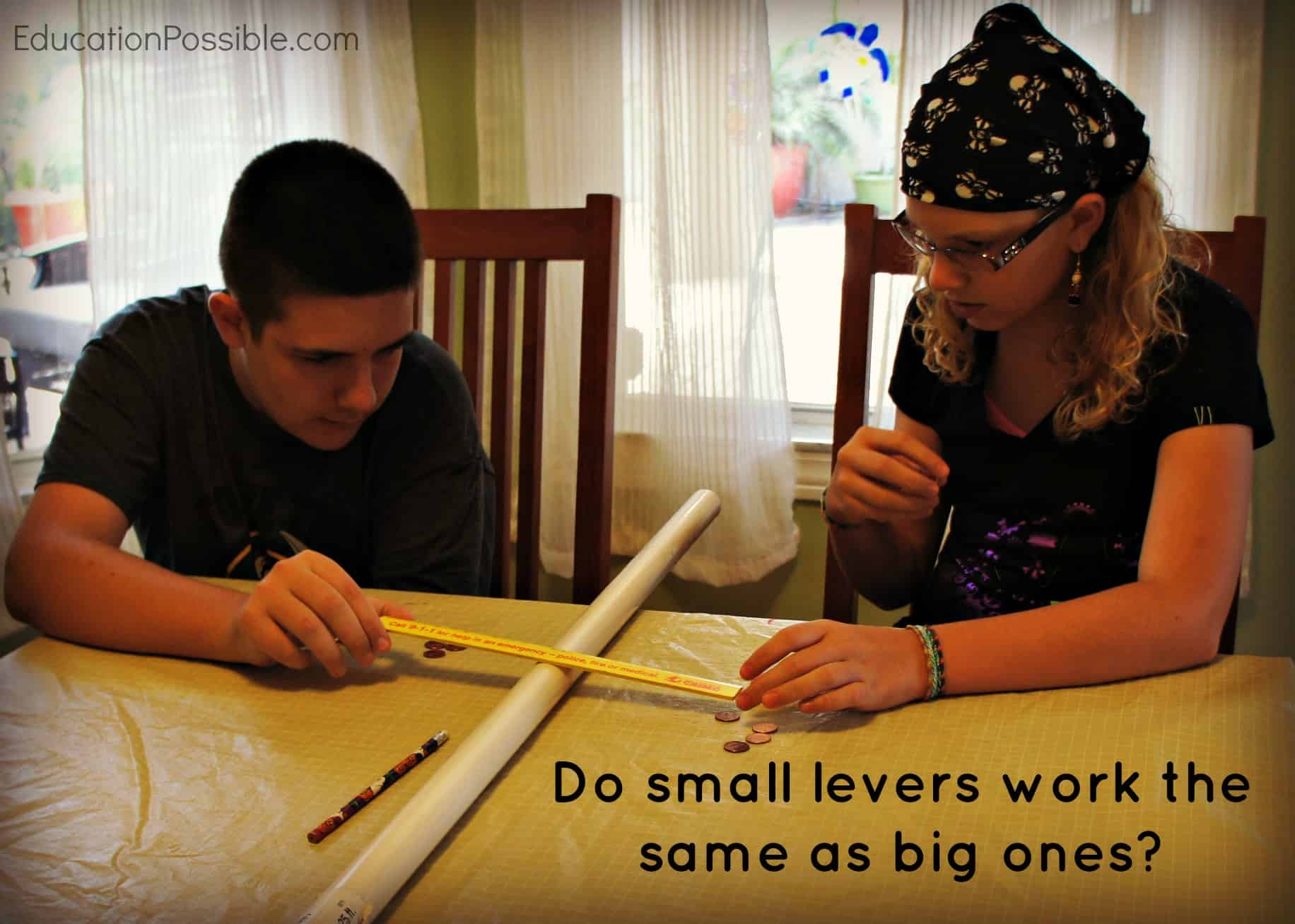Lever Experiments for Middle School
Have you done any lever experiments for middle school yet? It’s easy to do these science activities for middle school at home.
I love it when kids discover that levers are everywhere, including scissors, see-saws, crowbars, and nail clippers.
When we studied this subject in science, my kids had quite a few questions about levers and how these simple machines work, so I decided it was time to perform some fun science experiments, so we could learn about these helpful tools.

This post contains affiliate links.
If you want to make your schooling more hands-on, science is an easy place to start. Middle school science experiments make lessons come alive and engage students.
Teaching Levers
Good terms to know:
- Lever = rigid material that sits on the fulcrum
- Simple machine = non-motorized tool used to provide mechanical advantage. With them, your effort is multiplied.
- Fulcrum = the point on which a lever pivots
- Load = what you’re trying to lift
- Lever Arm = part of lever opposite of the load
- Effort = force used to lift the load – usually you!
Lever Activities
I decided to make levers the focus of one of our science co-op classes. As I taught them about levers and how they’re used in our everyday lives, they had a bunch of questions. So, for each question they asked, I gave them an experiment to complete.
By working through a hands-on project instead of just reading from a textbook, they really understood the specific lesson each experiment was trying to teach. I love watching them get excited about learning and seeing that moment when it all clicks for them.
Question #1 – Are levers really that helpful?
This first question was tested by using a hammer’s claw to pull out a nail. After pounding nails into a board, I asked the kids to pull them out using their hands. Then I gave them a hammer to use.

They learned:
They discovered that it is much easier to remove nails with a lever because as they pushed on the handle and claw (lever arm), the head (fulcrum) pushed against the wood and simply pulled out the nail (load). When they only used their own strength, they struggled to move the nails and at times it hurt their hand.
The hammer gave them the leverage they needed to easily pull the nails out of the board.
Question #2 – Is it easier to lift heavy things with a lever and does fulcrum placement make a difference?
The kids built a lever by placing a 1” x 4” board (the lever) over a 14 oz. can (the fulcrum). They used 12 books of the same size as their experimental load.
First, they put the load on one end of the lever and moved the fulcrum far away from the load. This gave them a small lever arm that they pushed on to raise the books.
They learned:
It became obvious that someone needed to hold the fulcrum in place because the can kept rolling as we used the lever. Once that was secured, they found that they had to use a lot of effort to lift the books because the fulcrum was so far away from the load.

Next, they moved the fulcrum closer to the load and tried to lift it again. This time they had a larger lever arm to push against to raise the books.
They learned:
With the fulcrum and load close together, it was MUCH easier to lift the books this time. In fact, many were able to do it by pushing down with just one finger.
Why was it easier? Because the more space they had to move the books, the less effort it took.
Theoretically, you could lift anything as long as you had a long enough lever.
“Give me a lever long enough and a fulcrum on which to place it, and I shall move the world.” ~ Archimedes
Question #3 – Do small levers work the same?
To test this question, I gave the kids a ruler, a small PVC pipe and 10 pennies. They needed to balance the ruler (lever) on the PVC pipe (fulcrum) without coins and then with all 10.

They learned:
It was challenging to balance the lever and they found that they had to move the fulcrum to gain balance, just like with the larger lever. Every time they added a coin, they worked with coin placement and moved the fulcrum to get the lever to balance again.
Eventually, they were all successful in getting all 10 coins to balance on their ruler.
Take some time to look around with your teen and you’ll both quickly see how many levers we use to make our lives easier. Through fun hands-on activities like these, your kids will gain a working knowledge of how this simple machine works.

More Fun Science Experiments for Middle School
- 10 Volcano Activities for Middle School
- 25+ Fun Science Experiments for Middle School Myth Busters
- Fun Activities to Learn About Friction
- Simple Science – Catapults and Trajectory
Helpful Middle School Science Tools
What have you used to teach your kids about the power of the lever?


Thanks for linking up to our blog hop this week. I pinned your article to our Science board!
Thank you for pinning Trish! Hopefully your readers will love our hands-on science experiments as much as we do! We love your blog hop!!
Megan,
Great tips! Pinned and am featuring at Family Fun Friday!
Monica
http://happyandblessedhome.com
Thank you for sharing Monica! I’ve added your button to our Blog Hops/Link-Ups page and left a comment on your site. I’m glad you stopped by!